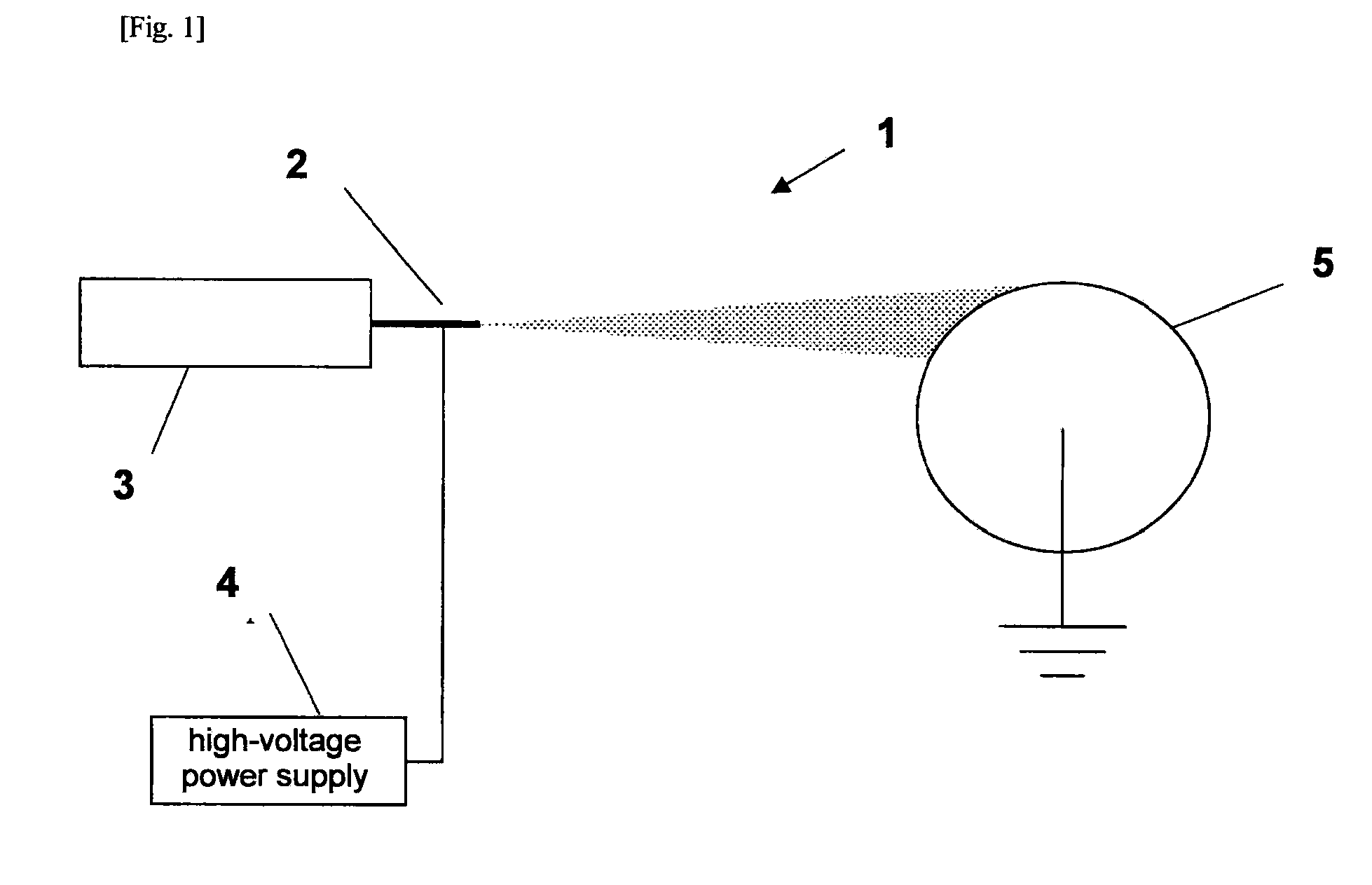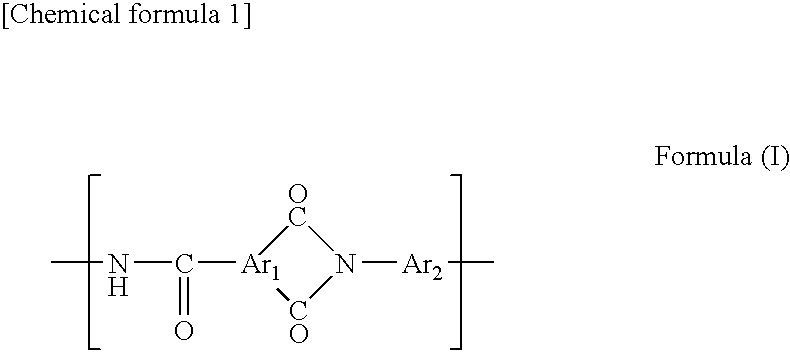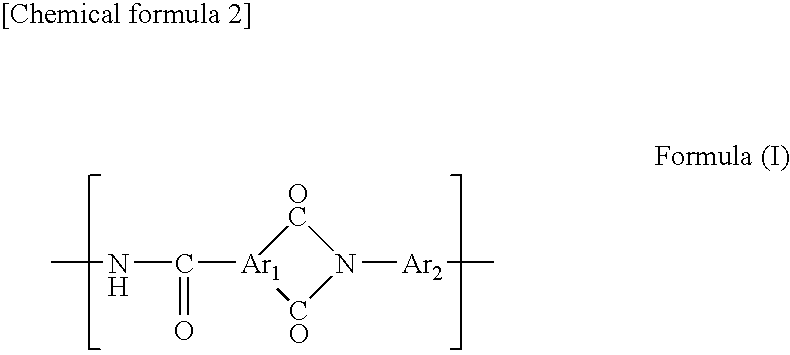Polyamide imide fiber, non-woven fabric composed of the fiber, process for manufacture of the non-woven fabric, and separator for electronic component
- Summary
- Abstract
- Description
- Claims
- Application Information
AI Technical Summary
Benefits of technology
Problems solved by technology
Method used
Image
Examples
example 1
Polymerization Example 1
[0103]Into a four-neck flask equipped with a thermometer, a condenser tube and a nitrogen gas introduction tube, 1 mol of trimellitic acid anhydride (TMA), 0.995 mol of diphenylmethanediisocyanate (MDI) and 0.01 mol of potassium fluoride were fed with N,N-dimethylacetamide so that the solid concentration was 25%. The mixture was heated to 90° C. and stirred for about 3 hours to synthesize polyamide-imide. The obtained polyamide-imide had inherent viscosity of 0.86 dl / g and a glass transition temperature of 290° C.
example 2
Polymerization Example 2
[0104]Polyimide-imide was synthesized in the same manner as in Example 1 except that potassium fluoride used in Example 1 was altered to 1,8-diazabicyclo[5,4,0]-7-undecene (DBU). The obtained polyamide-imide had inherent viscosity of 0.80 dl / g and a glass transition temperature of 290° C.
example 3
Polymerization Example 3
[0105]Into a four-neck flask equipped with a thermometer, a condenser tube and a nitrogen gas introduction tube, 1 mol of trimellitic acid anhydride (TMA), 1 mol of diphenylmethanediisocyanate (MDI) and 0.02 mol of 1,8-diazabicyclo[5,4,0]-7-undecene (DBU) were fed with N-methyl-2-pyrrolidone (NMP) so that the solid concentration was 15%. The mixture was heated to 90° C. and stirred for about 3 hours under a nitrogen stream and then heated to 120° C. and stirred for an hour to synthesize polyamide-imide. The obtained polyamide-imide had inherent viscosity of 1.38 dl / g and a glass transition temperature of 290° C.
PUM
| Property | Measurement | Unit |
|---|---|---|
| Length | aaaaa | aaaaa |
| Length | aaaaa | aaaaa |
| Diameter | aaaaa | aaaaa |
Abstract
Description
Claims
Application Information
 Login to View More
Login to View More - R&D
- Intellectual Property
- Life Sciences
- Materials
- Tech Scout
- Unparalleled Data Quality
- Higher Quality Content
- 60% Fewer Hallucinations
Browse by: Latest US Patents, China's latest patents, Technical Efficacy Thesaurus, Application Domain, Technology Topic, Popular Technical Reports.
© 2025 PatSnap. All rights reserved.Legal|Privacy policy|Modern Slavery Act Transparency Statement|Sitemap|About US| Contact US: help@patsnap.com



